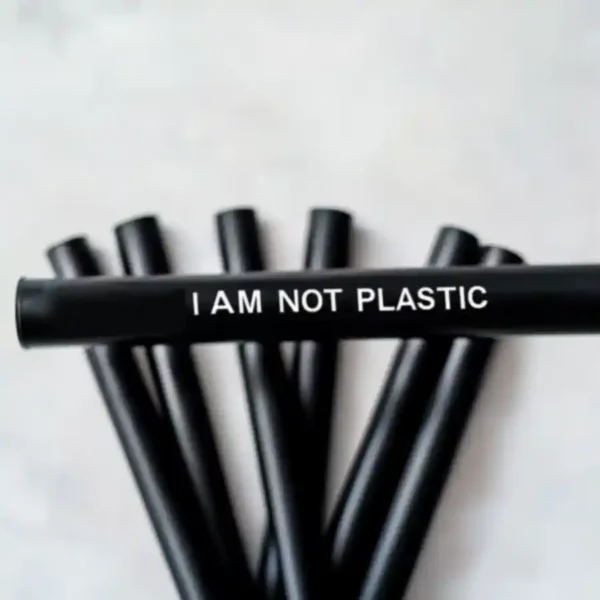Sustainable Sugar Cane Straws: B2B Compliance & Cost Benefits

Introduction: Plastic Bans and Eco-Friendly Sugar Cane Straws Benefits

Picture this: It’s a busy Friday night at your restaurant chain. The tables are full, drinks are flowing, and plastic straws are being handed out with every beverage. Fast forward to 2023, and this scene has fundamentally changed acros much of the world. Over 100 countries have now implemented some form of single-use plastic regulation, leaving busines owners scrambling for compliant alternatives that won’t disappoint customers or break the bank.
This global shift isn’t just a passing trend. The United Nations Environment Programme has documented how plastic pollution has reached crisis levels, with an estimated 8 million tons of plastic waste entering our oceans annually. For food service businesses, hotels, and event companies, this regulatory landscape presents both a challenge and an opportunity.
Enter sugar cane straws – a game-changing solution that’s rapidly becoming the go-to alternative for forward-thinking businesses. Unlike their plastic predecessors, sugar cane straws are fully biodegradable and compostable, breaking down naturally without leaving harmful microplastics behind. They’re not just environmentally responsible; they’re increasingly becoming a busines necessity as regulations tighten worldwide.
What makes sugar cane straws particularly appealing for B2B buyers is their unique combination of sustainability, durability, and customer appeal. Made from agricultural byproducts of sugar production, these straws repurpose material that would otherwise be discarded, creating a circular economy solution that resonates with environmentally conscious consumers.
As a busines decision-maker, you’re likely weighing factors beyond just environmental impact – cost efficiency, customer experience, brand perception, and regulatory compliance all factor into your straw selection. That’s precisely why we’ve created this comprehensive guide to help you navigate the transition to sustainable sugar cane straws with confidence.
Regulatory Compliance: Certifications for Eco-Friendly Sugar Cane Straws

Navigating the complex web of international regulations for food contact materials can be daunting. For B2B buyers, ensuring that your sustainable products meet all necessary safety and compliance standards isn’t just about avoiding fines—it’s about protecting your brand reputation and customer trust.
Sugar cane straws from reputable suppliers like NatureBioEco come with crucial certifications that simplify your compliance journey. The most important is FDA certification, which confirms these straws meet the U.S. Food and Drug Administration’s strict requirements for food contact materials. Similarly, LFGB certification (often called the “German FDA”) provides assurance for European markets with its rigorous safety standards.
According to a 2022 industry report by GreenBiz, businesses face potential fines averaging $5,000-$10,000 per violation for non-compliant single-use items in jurisdictions with strict plastic bans. These financial penalties can quickly multiply for businesses with multiple locations or those serving large volumes of customers daily.
Sustainable food service requirements are constantly evolving, with many jurisdictions implementing increasingly stringent regulations. Home compostability certification is becoming particularly valuable, as it ensures your straws will break down in home composting conditions (not just industrial facilities), giving your customers more disposal options and ensuring compliance with the strictest regulations.
The certification proces for sugar cane straws involves rigorous testing for:
- Absence of harmful chemicals
- Biodegradability timeframes
- Structural integrity during use
- Consistent performance acros temperature ranges
- Sustainability of sourcing practices
By choosing properly certified sugar cane straws, you not only ensure legal compliance but position your busines as a responsible industry leader committed to both safety and sustainability.
How Eco-Friendly Sugar Cane Straws Compare to Other Eco Alternatives

With so many sustainable straw options flooding the market, how do sugar cane straws truly measure up? Let’s break down the practical considerations that matter most to businesses:
| Alternative | Holdbarhed | Customer Experience | Price Point | Bæredygtighed | Customization |
|---|---|---|---|---|---|
| ————- | ———— | ——————— | ————- | —————- | ————— |
| Sugar Cane Straws | High (4+ hours in liquid) | Natural feel, no paper taste | Mid-range | Fully biodegradable, agricultural byproduct | Highly customizable |
| Papirsugerør | Low (becomes soggy in 30-60 min) | Often softens quickly, can affect beverage taste | Low | Biodegradable but resource-intensive production | Limited customization |
| PLA “Compostable” Plastic | High | Similar to plastic | Mid-range | Requires industrial composting, not home compostable | Good customization |
| Pasta Straws | Medium | Can alter drink flavor, not suitable for hot drinks | Low-Mid | Food-based, biodegradable | Limited customization |
| Bambus sugerør | Very High | Natural but distinctive texture | High | Sustainable but requires washing between uses | Limited customization |
Sugar cane straws stand out for hospitality businesses because they offer the best balance of performance and sustainability. According to a 2023 consumer survey by Sustainable Packaging Coalition, 78% of customers reported a negative experience with paper straws due to premature softening, making sugar cane straws’ superior durability a significant operational advantage.
What sets sugar cane straws apart is their remarkable structural integrity. They maintain their shape and rigidity for hours—even in hot or alcoholic beverages—without affecting the taste of drinks. This performance factor is crucial for businesses where customer experience directly impacts reviews and repeat busines.
From a supply chain perspective, sugar cane straws also offer advantages. They’re lighter than many alternatives, reducing shipping costs and carbon footprint. Their production utilizes agricultural byproducts that would otherwise be burned, creating a circular economy solution that transforms potential waste into valuable products.
Top Busines Benefits of Switching to Eco-Friendly Sugar Cane Straws
Beyond regulatory compliance, the transition to sugar cane straws delivers measurable benefits to your bottom line and brand perception.
**Enhanced Brand Perception**: A sustainable busines approach resonates with modern consumers. A 2023 Nielsen Global Corporate Sustainability Report found that 73% of millennials and 72% of Gen Z consumers are willing to pay more for products and services from companies committed to positive environmental impact. By prominently featuring your use of sugar cane straws in marketing materials, you signal genuine commitment to sustainability rather than “greenwashing.”
**Cost-Effective Compliance**: While sugar cane straws typically cost more than conventional plastic straws upfront, they often prove more economical than alternatives when considering the total cost of ownership. Many businesses report that sugar cane straws’ durability reduces replacement frequency and waste. Additionally, in jurisdictions with plastic straw bans, switching proactively eliminates potential non-compliance costs like fines, legal fees, and operational disruptions.
**Operational Efficiency**: Sugar cane straws’ performance characteristics minimize common operational headaches. Their natural strength eliminates customer complaints about prematurely disintegrating straws, reducing the need for replacements during service. Their neutral taste profile ensures they don’t interfere with carefully crafted beverage flavors, maintaining product quality standards.
**Marketing Differentiation**: In competitive markets like restaurants, bars, hotels, and event venues, sustainable practices increasingly serve as differentiators. Customized sugar cane straws with your logo not only promote your brand but also showcase your sustainability commitment. This tangible demonstration of values creates shareable moments on social media as customers increasingly document and promote businesses with genuine eco-friendly practices.
**Alignment with Corporate Sustainability Goals**: For larger enterprises with formal corporate social responsibility (CSR) or environmental, social, and governance (ESG) initiatives, measurable waste reduction through sugar cane straws contributes to annual sustainability reporting metrics. According to the Governance & Accountability Institute, 92% of S&P 500 companies now publish sustainability reports, making trackable green initiatives increasingly important.
Environmental Impact: Why Eco-Friendly Sugar Cane Straws Wins
The environmental advantages of sugar cane straws extend far beyond simply avoiding plastic pollution. Their entire lifecycle represents a significant improvement over conventional alternatives.
Sugar cane straws start their journey as agricultural residue from sugar production—material that would typically be burned, creating unnecessary carbon emissions. By repurposing this byproduct, the production proces achieves a remarkable 90% reduction in carbon footprint compared to conventional plastic straws, according to a 2022 lifecycle assessment published in the Journal of Cleaner Production.
At the end of their useful life, sugar cane straws return to nature completely. Unlike many “biodegradable” alternatives that require industrial processing facilities, properly certified sugar cane straws can decompose in home composting environments within 90-180 days, leaving behind only organic matter that enriches soil. This complete biodegradability addresses the growing concern about microplastics, which have now been detected in human bloodstreams and even unborn babies.
For businesses with sustainability metrics, the impact is quantifiable. A mid-sized restaurant chain switching to sugar cane straws from plastic can prevent approximately 1-2 tons of plastic waste annually, depending on customer volume. Hotels and large event venues often see even more dramatic results, with some reporting plastic waste reduction of 5+ tons yearly after implementing comprehensive sustainable straw programs.
The United Nations Environment Programme has identified plant-based alternatives like sugar cane straws as critical components in addressing the global plastic crisis, particularly for single-use items where reusable options aren’t practical due to hygiene requirements or operational constraints.
Case Study: Sugar Cane Straws Succes in Action
Ocean Blue Resort Group, a mid-sized hospitality company operating 12 properties acros coastal regions, implemented sugar cane straws acros all their food and beverage outlets in early 2022. Their transition offers valuable insights for businesses considering a similar move.
Prior to the switch, Ocean Blue was using approximately 3.5 million plastic straws annually, contributing roughly 8,750 pounds of plastic waste to their operational footprint. Their sustainability team identified two primary motivations for change: upcoming regional plastic bans that would affect 8 of their 12 properties, and increasing customer feedback specifically mentioning plastic waste as a concern at beachfront locations.
After evaluating multiple sustainable alternatives, they selected customized sugar cane straws for their durability and performance. Each straw featured their ocean conservation branding, transforming a necessary operational item into a marketing tool that reinforced their environmental commitment.
The results were compelling:
- 100% elimination of plastic straw waste (8,750 pounds annually)
- 94% positive customer feedback on the new straws (compared to 62% who reported negative experiences with previously tested paper alternatives)
- $28,000 in avoided potential fines from upcoming plastic straw regulations
- Featured in two travel publications as an eco-friendly destination
- 22% increase in social media mentions specifically referencing their sustainability practices
While the per-unit cost was higher than their previous plastic straws, Ocean Blue calculated that the marketing value, regulatory compliance, and customer satisfaction benefits delivered an overall positive ROI within the first year of implementation.
Perhaps most tellingly, when surveyed, 89% of their food and beverage managers reported preferring the sugar cane straws to previous alternatives, citing fewer customer complaints and operational issues.
Ofte stillede spørgsmål
- How long do sugar cane straws last in drinks?
- Sugar cane straws maintain their structural integrity for 4+ hours in most beverages, including hot, cold, and alcoholic drinks. Unlike paper alternatives that can begin softening within 30 minutes, sugar cane straws remain rigid throughout normal service periods, eliminating the need for straw replacements during customer visits.
- Are sugar cane straws more expensive than plastic straws?
- The unit cost of sugar cane straws is typically 2-3 times that of conventional plastic straws. However, when factoring in potential fines from plastic regulations, customer satisfaction, marketing benefits, and waste reduction goals, many businesses find the total value proposition compelling. Bulk ordering can significantly reduce per-unit costs.
- What customization options are available for branded sugar cane straws?
- Sugar cane straws can be customized with your logo, message, or design in environmentally friendly inks. Options include color variations, different lengths (standard 8″ or jumbo 10″), various diameters (regular, cocktail, or bubble tea size), and custom packaging. Minimum order quantities for customization typically start at 10,000 units.
- How should we dispose of used sugar cane straws?
- Properly certified sugar cane straws can be disposed of in commercial composting facilities or home compost bins, where they’ll typically break down within 90-180 days. They can also biodegrade in natural environments if accidentally littered, though proper disposal is always recommended. They should not be included in plastic recycling streams.
- Do sugar cane straws have an aftertaste that affects drinks?
- Quality sugar cane straws are taste-neutral and won’t impart flavors to beverages. This contrasts with some paper straws that can affect drink taste or bamboo alternatives that may have a distinctive flavor profile. This neutrality makes them ideal for premium beverages where taste experience is crucial.
- What certifications should I look for when ordering sugar cane straws?
- Key certifications include FDA approval for food contact safety, LFGB certification for European markets, and home compostability certification. Additional certifications like BPI (Biodegradable Products Institute) verification or OK Compost certification provide further assurance of environmental performance claims.
- What are the minimum order quantities for busines purchases?
- Standard minimum order quantities typically start at 5,000 units for stock sugar cane straws and 10,000-25,000 for custom-branded options. Significant volume discounts usually begin at 50,000+ units. Many suppliers offer sample packs for businesses to test before committing to larger orders.







